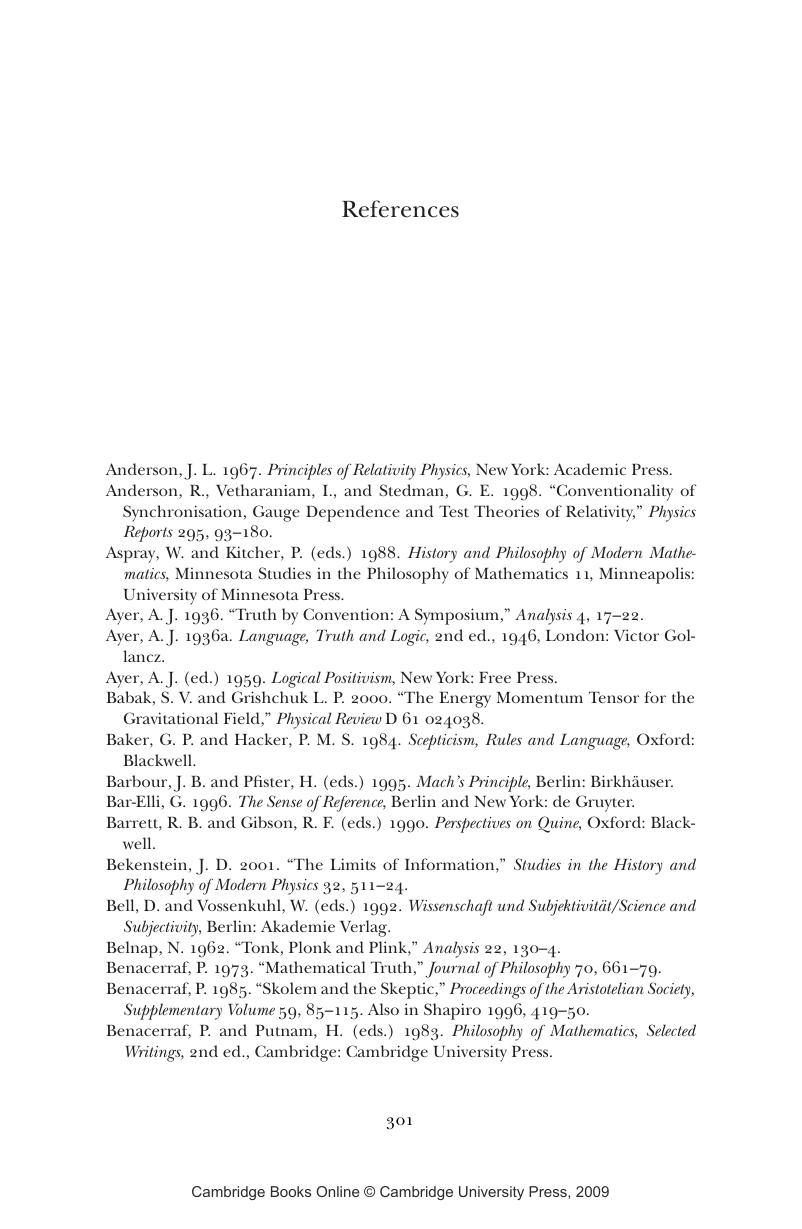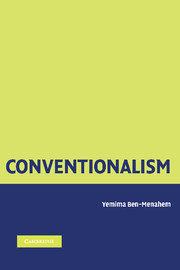Book contents
- Frontmatter
- Contents
- Preface
- 1 Overview: The Varieties of Conventionalism
- 2 Origins: Poincaré and Duhem on Convention
- 3 Relativity: From “Experience and Geometry” to “Geometry and Experience”
- 4 Implicit Definition
- 5 “Unlimited Possibilities”: Carnap on Convention
- 6 Metaphor and Argument: Quine on Convention
- 7 Wittgenstein: From Conventionalism to Iconoclasm
- References
- Index
- References
References
Published online by Cambridge University Press: 04 December 2009
- Frontmatter
- Contents
- Preface
- 1 Overview: The Varieties of Conventionalism
- 2 Origins: Poincaré and Duhem on Convention
- 3 Relativity: From “Experience and Geometry” to “Geometry and Experience”
- 4 Implicit Definition
- 5 “Unlimited Possibilities”: Carnap on Convention
- 6 Metaphor and Argument: Quine on Convention
- 7 Wittgenstein: From Conventionalism to Iconoclasm
- References
- Index
- References
Summary

Information
- Type
- Chapter
- Information
- ConventionalismFrom Poincare to Quine, pp. 301 - 320Publisher: Cambridge University PressPrint publication year: 2006
